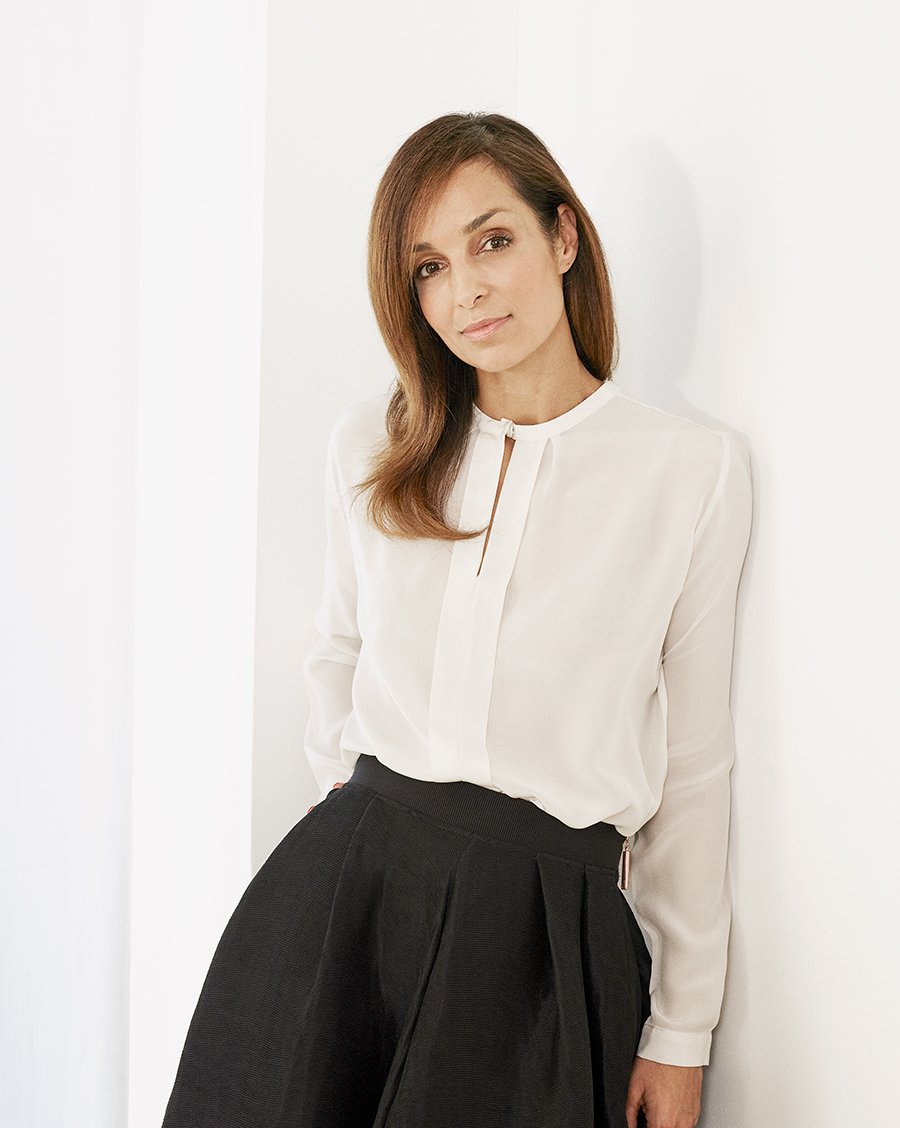
February 21, 2019
GAME CHANGERS: By Collaborating with Artists, Njusja de Gier Is Driving Innovation and Design at Kvadrat
Thanks to de Gier, Kvadrat’s SVP of branding and communication, the manufacturer has quietly assumed the role of global cultural powerhouse.

The 2017 makeover of Kvadrat’s headquarters in the Danish port town of Ebeltoft is very much an endeavor in practicing what you preach. The grounds, landscaped by artist Olafur Eliasson and architect Günther Vogt, are now home to a growing collection of art installations—ones that the manufacturer hopes will attract tourists like those seen on the Vitra campus in Weil am Rhein, Germany.
A short flight away in Copenhagen, a key player behind the revamped campus, Njusja de Gier, is at work. The company’s titular senior vice president of branding and communication, de Gier in practice operates as something of a creative strategist and curator at Kvadrat, carrying out a large-scale reimagining of the 50-year-old enterprise. In the past decade, the manufacturer has quietly assumed the role of global cultural powerhouse, collaborating with high-profile institutions and commissioning renowned artists and designers.
It was only fitting, then, that the Kvadrat HQ better reflect this new personality. “We were doing all these commissions and donating them to museums, so we thought, ‘Why aren’t we curating some art installations around our landscape?’” says de Gier, who joined the brand in 2008. Beyond its grounds, the headquarters now also features a free-flowing, open-plan mix of work, social, dining, and display areas awash in calming colors and cozy textiles.
In recent years, Kvadrat has diversified its product line through collaborations with designers like Raf Simons, and through the acquisition of brands such as Kinnasand, Danskina, and Sahco, which offer routes into the consumer market. It has also bought a majority share in the innovative solid-board manufacturer Really, which upcycles textile waste. The company has opened several showrooms in Asia and unveiled others that target the residential sector, with more planned.

But the cultural program that de Gier directs is undoubtedly at the heart of Kvadrat’s strategy. Since her arrival, de Gier has grown the marketing team from four people to 28, launched a regular program of experimental projects with designers, and established a schedule of six artistic collaborations per year. Among the most high-profile of the latter category have been a 2009 project with German artist Thomas Demand, who used more than five kilometers of Kvadrat textiles in a solo exhibition in Berlin, and Erwan and Ronan Bouroullec’s 2011 Textile Field, a striped, 240-square-meter installation at the Victoria and Albert Museum in London. The brand’s goal to expand its presence in Asia has also led to more work with creatives from the East, including designer Akira Minagawa and the artist Koki Tanaka, both from Japan.
This network-driven approach to branding, de Gier argues, is aimed primarily at inspiring rather than strictly selling. (She has all but put a stop to advertising that pushes specific products.) Deploying culture as a Trojan horse for commerce is, of course, common in the design industry, a sector that thrives as much on image as on quality. But Kvadrat’s endeavors gain credibility because they’re not just public-facing exercises but also efforts to develop and explore the potential of its own collection and fabrication capabilities.
For example, as part of her work on a Kvadrat-supported exhibition opening at the Louisiana Museum of Modern Art this year, Swiss artist Pipilotti Rist was invited to its headquarters and reviewed the whole product catalog to glean ideas. In creating a seating area in the National Gallery of Denmark in 2011, the Vietnamese-Danish artist Danh Vō delved into the brand’s archives to find previously unproduced work by midcentury designer Nanna Ditzel. And Saal, a 2011 installation by Thomas Demand for the Städel Museum in Frankfurt, required a precise printing technique to make 32 separate curtains look like one flush panel. “He made us do it three times before he was ready,” says de Gier.

This work also helps Kvadrat think about its offerings innovatively. Putting textiles in the hands of emerging and established designers has resulted in new products, fashion, and works of art. More than 30 creatives interpreted Ditzel’s Hallingdal in 2012; 22 others reimagined the colorful Divina fabric by artist Finn Sködt in 2014; and 19 designers gave Giulio Ridolfo’s Canvas the treatment in 2017.
Yet perhaps the strongest evidence of Kvadrat’s commitment to culture is that its initiatives, as marketing tools, are not always easy wins. A current project with Olafur Eliasson, for instance, has been in progress for a decade. Danh Vō worked with the manufacturer for six months to develop a red dye made from Mexican beetles—which, in the end, never came to fruition.
But as a means of catapulting Kvadrat in front of a global audience, it’s easy to see why de Gier pursues such an aggressive cultural agenda. She cites a collaboration with French artist Philippe Parreno in Milan, which materialized within three months—and led to another installation only six months later at the Turbine Hall of London’s Tate Modern.
Such activities, she explains, do translate into commercial opportunities: The company’s revenue has tripled over the past seven years, and the sales of textiles used in its public design projects tend to spike after they go on display. Importantly, this approach also burnishes the brand’s reputation in a more subtle way. “It’s about celebrating creativity and innovation,” she says. “Our art collaborations create a lot of goodwill, as people see that we give something back to the creative sector—and it also helps us build our profile as a thought leader and driver of contemporary culture.”
You may also enjoy “Preview What’s in Store for Salone del Mobile 2019.”
Would you like to comment on this article? Send your thoughts to: [email protected]









